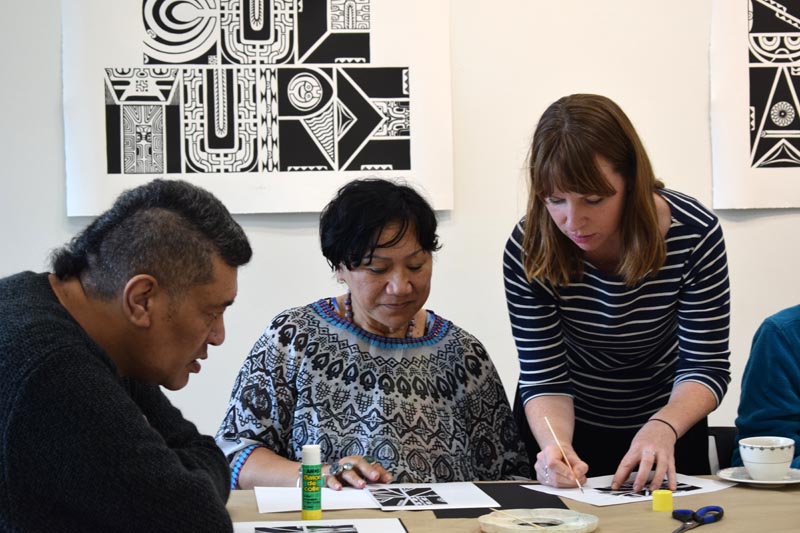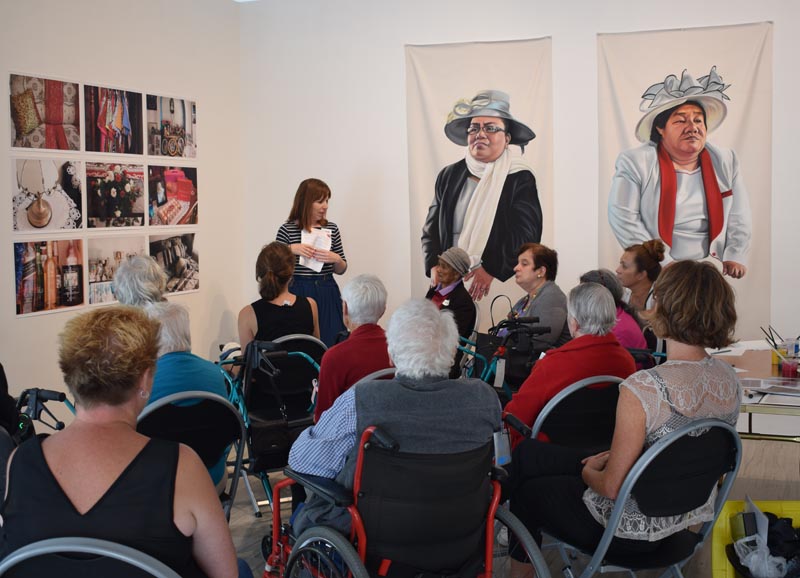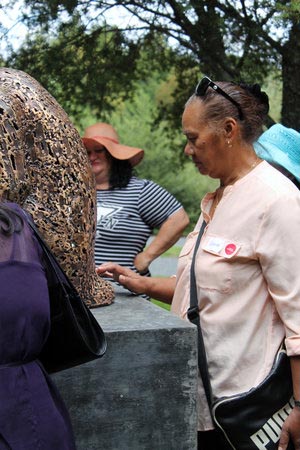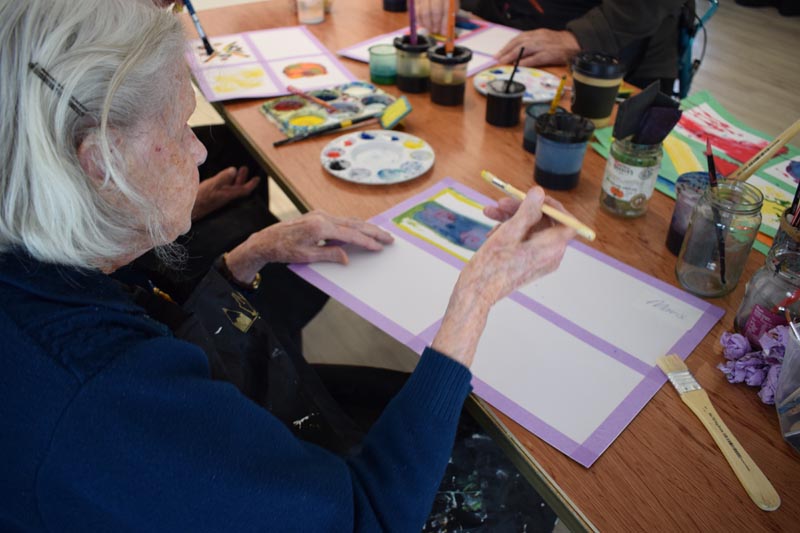Connecting the creative dots for people with dementia
By Keith Reeves
10 September 2018
Connect the Dots, an Auckland charity running art classes and workshops for older people and people living with dementia, is working towards an exhibition in 2019 aimed at reducing stigma and social isolation and showing what people living with dementia have to offer.
 Connect the Dots was co-founded in 2014 by art educators Andrea Gaskin and Selina Anderson. It grew out of a shared passion they have for the arts and creativity, and their belief that the arts should be accessible for everyone.
Connect the Dots was co-founded in 2014 by art educators Andrea Gaskin and Selina Anderson. It grew out of a shared passion they have for the arts and creativity, and their belief that the arts should be accessible for everyone.
Andrea knew that the Museum of Modern Art in New York had done work in this field and so she began using their resources.
“I was also fortunate that Dementia Auckland were supportive right from the start as I began to develop the work. The Auckland Council was also wonderful when I went to them asking to use their facilities. It means that our events take place in some very beautiful places.”
Dementia statistics
The need to support people with dementia and keep their minds working as well as possible for as long as possible is of increasing importance. By 2050, it is estimated that 150,000 New Zealanders will be living with dementia – something that also affects their family and friends. According to Alzheimers New Zealand, there are currently more than 60,000 New Zealanders living with dementia.
“The parts of the brain that remain untouched for the longest are the parts where imagination and creativity live, and so I believe it's a natural fit to engage people with dementia in an art programme," Andrea says.
 Connect the Dots’ Make Moments programme has two main parts. The first part is often an encounter with works of art that might share a common subject, genre or way of working.
Connect the Dots’ Make Moments programme has two main parts. The first part is often an encounter with works of art that might share a common subject, genre or way of working.
The group is supported to discuss the works, Andrea says. “It’s vital to pace the talk appropriately. We take this gently so participants have lots of time to formulate ideas and develop conversation across the group. And although the art is the focus we remember that it’s a prompt. Often it’s when the talk segues into another subject that brilliant things happen, and we see people being enthusiastic and engaging their brain.”
A vital part of every event is given to time for tea or coffee. Like everything else, this happens in a public space. “We think this helps to break down the barriers built around dementia that can leave people being isolated from the wider society. It can also challenge stereotypes the public may have about dementia.”
 After that initial encounter and conversation about artworks, there is often a second event where participants practise creative skills, perhaps making something on the same theme or using a similar kind of technique. The emphasis is not on the quality of what’s produced but on the engagement with the work; with others working alongside; and with the room.
After that initial encounter and conversation about artworks, there is often a second event where participants practise creative skills, perhaps making something on the same theme or using a similar kind of technique. The emphasis is not on the quality of what’s produced but on the engagement with the work; with others working alongside; and with the room.
Selina and Andrea are passionate about rooms. “Leaving home or a care facility and coming into a wonderful space engenders a sense of self-worth and is crucial to our events. So, for example, we’ve been able to do events in the boardroom at Pah Homestead, which is a really lovely area.”
Among the feedback:
- “It’s humanising, validating and eases the isolation of the sufferer – and the carer.”
- “All of it’s great – the socialisation, the art, time with my daughter.”
- “You feel so good after you've done the activities because your mind is thinking.”
The importance of setting is a challenge for the second part of Connect the Dots’ work: encouraging the use of art conversations and workshops with more advanced dementia sufferers less able to leave their care homes.
Andrea says the charity is working with staff in the homes to develop their skills so can support the discussions. “Often care workers are really committed to developing programmes and want to make a difference. Our role is to show them how the methods we use can do that, even when it seems we’re encouraging a conversation that is taking a completely unexpected direction.”
 Beyond that, Connect the Dots has other targets. An evaluation of its work last year showed there was a desire among participants to have their creative work seen. Depending on funding, the project would involve people with dementia “buddying up” with a young artist and working towards an exhibition.
Beyond that, Connect the Dots has other targets. An evaluation of its work last year showed there was a desire among participants to have their creative work seen. Depending on funding, the project would involve people with dementia “buddying up” with a young artist and working towards an exhibition.
They are also planning a video project, employing a documentary filmmaker to explore with participants what creativity means for them.
Connect the Dots is keen to offer first-language opportunities for people with dementia and their families for whom English is not their first language. That requires researching Auckland demographics to establish which languages would be of most benefit.
Connect the Dots is a member of the Arts For All Auckland Network, facilitated by Arts Access Aotearoa. If you would like to become a member, please contact Claire Noble (T: 04 802 4349 E: claire.noble@artsaccess.org.nz).
LATEST POSTS
- Accessibility
- Accessible Arts
- Achievements Celebrations
- Artist My Stories
- Arts Accessibility
- Arts Culture
- Arts Culture Venues
- Arts For All
- Arts In Corrections
- Canterbury Region
- Circus
- Creative Spaces
- Creative Wellbeing
- Dance
- Maori Art
- Maori Arts
- Mental Health
- Music Sound
- Professional Development Arts
- Theatre
- Tikanga Practices
- Visual Arts
- Writing Publishing


